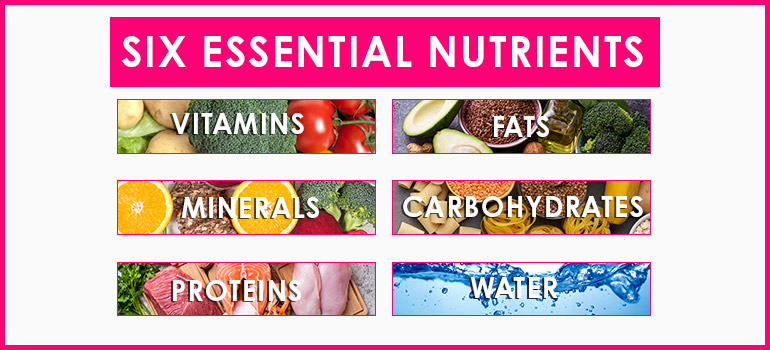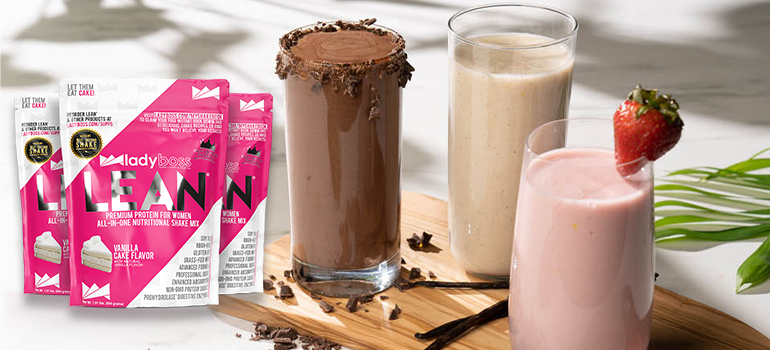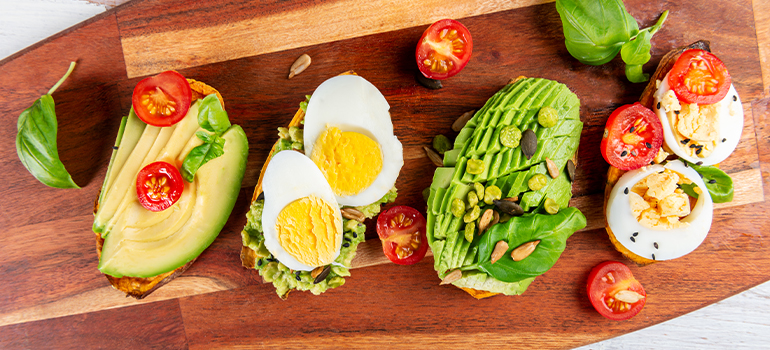Health Foods are Healthy Because of the Nutrients They Provide Your Body
Advice about health foods is absurdly confusing.
Healthy diet information is a labyrinth of conflicting opinions and unsubstantiated “facts.”
Almost every blog, article, and academic paper is chocked-full of the same buzz-words and witticisms, even though the advice given about what to eat – and what not to eat – varies wildly.
Discerning the facts of healthy foods from the fictions can feel impossible.
And worse of all, there’s too much talk about food!
Focus on Nutrients, Not Foods
Food experts tell us what health foods we should eat, but rarely why.
Likely, you already know why to eat some foods and why others have little to no dietary value: nutrients.
While you may already know nutrients give food its value, you probably don’t know a great deal about them. What you do know about nutrients probably consists of nebulous, overused catch-words like:
- Calories.
- Building blocks.
- Antioxidants.
- Chemical processes.
Likely, you know that bananas and tomatoes contain potassium, aloe vera contains vitamin E, that oranges and bell peppers have large amounts of Vitamin C, dairy products contain calcium, and that carrots have Vitamin A.
Also, you probably know that Vitamin A helps your eyes. Vitamin E helps your skin. Vitamin C is an antioxidant. And potassium is “one of the most important minerals in your body,” even if you don’t know what it does.
In other words, you probably know the basics about nutrition.
Most people know a little about essential nutrients like vitamins, minerals, amino acids, carbohydrates, and fats. But the majority don’t know very much about the specifics of nutrients and nutrition.
The reason, there simply isn’t much information on the specifics of nutrients.
Health foods Don’t Make You Healthy, the Nutrients in Foods Do.
More important than knowing what foods to eat is knowing what nutrients foods provide.
It is essential to know which nutrients do what for our bodies.
Then, you can decide which foods that have those nutrients you want to eat.
The essential and non-essential nutrients – and the amounts of those nutrients we consume – play a significant role in whether or not we are healthy.
If we know what nutrients we need, we can decide what foods we eat.
The following article will outlines:
- The essential nutrients you need.
- Non-essential nutrients aren’t necessary but are healthy.
- Essential nutrients can be harmful if you consume too much often.
- Non-essential nutrients will set back your weight loss objectives and health.
If you know what essential and non-essential nutrients are in foods, you can decide for yourself what foods are healthy!
Essential Nutrients: Vitamins, Minerals, Proteins (Amino Acids), Fats, Carbohydrates, Oils, & Water

The vitamins, minerals, proteins, fat, amino acids, carbohydrates, and water in foods determine a food’s value to your health. That is to say, the essential nutrients in food — and the lack of unhealthy, nonessential nutrients — is synonymous with that food’s healthiness.
All non-processed foods are a combination of essential nutrients and non-essential nutrients. For that reason, unprocessed foods are typically the healthiest.
Essential Vitamins You Require Daily
On their own, vitamins can not accomplish a great deal. For that matter, nor can minerals.
But together, vitamins and minerals manage everything from bone density to the strength at which your heart beats.
Vitamins and minerals stave-off disease and inoculate diseases already affecting your body. Together, vitamins and minerals maintain the efficiency of your digestive system and help you pass waste with ease.
Vitamins and minerals can boost your energy levels as well as give you greater endurance.
And, vitamins and minerals help your brain function. They can minimize depression and make you happier.
Also, vitamins and minerals can increase your libido!
The following are the 14 essential vitamins and what they do and what foods you can find them in!
Following the vitamins listicle, a list of the essential minerals you require!
Vitamin A (a.k.a., “beta-carotene” or “retinol”)

What Vitamin A Does: Vitamin A can improve the condition of your skin — making it more radiant, — prevent eye conditions, and improve eye health.
The most evident symptoms of a Vitamin A deficiency is an eye disease called xerophthalmia. Poor eyesight, as well as age-related macular degeneration, characterize xerophthalmia.
And according to the National Institutes of Health, Vitamin A supplements also reduce the risk of some cancers. That includes lung and prostate cancer.
How Much Vitamin A You Need: As much as you can get naturally or what you receive in a daily supplement. Excess Vitamin A is not unhealthy, nor does it create congenital disabilities (birth defects) according to the NIH.
Foods with Most Vitamin A: Beef liver, cod liver oil, sweet potatoes, carrots, black-eyed peas, spinach are the foods with the most Vitamin A according to Medical News Today.
Vitamin B1 (a.k.a., “thiamin”)

What Vitamin B1 Does: Vitamin B1 is essential to the conversion of carbohydrates into energy, according to Medical News Today. B1 does not play a role in converting carbohydrates into body fat.
“Vitamin B1, or thiamin, helps prevent complications in the nervous system, brain, muscles, heart, stomach, and intestines. It is also involved in the flow of electrolytes into and out of muscle and nerve cells,” Explains MNT.
A Vitamin B1 deficiency may cause short term memory loss, the weakening of muscles, and cardiovascular symptoms. In extreme cases of a thiamin deficiency, symptoms can include an enlarged heart, which can lead to congestive heart failure. Chronic alcoholism can create such a Vitamin B1 deficiency.
How Much Vitamin B1 You Need: If you are over the age of 18, you require at least 1.1 mg per day. If you are pregnant, you require 1.4 mg per day.
Health Foods with the Most Vitamin B1: Enriched breakfast cereals, rice (white, brown, and enriched), pork chops, trout, and black beans, documents the National Institute of Health, are the foods with the most Vitamin B1.
Vitamin B2 (riboflavin)

What Vitamin B2 Does: Vitamin B2 is the primary component of two critical enzymes, flavin mononucleotide (FMN) and flavin adenine dinucleotide (FAD). It is vital for energy production, cellular function, muscle growth, and the metabolism of fats.
Niacin helps your body maintain low blood pressure and prevent blood pressure hypotension.
A severe Vitamin B2 deficiency — which is only prevalent in vegetarian athletes and vegans who consume no milk or meats — includes symptoms such as skin lesions, cracked lips, inflamed neck and throat, the formation of cataracts, reproductive issues, and degeneration of the liver.
How Much Vitamin B2 You Need: The recommended daily allowance of riboflavin is 1.1 mg for women over 18.
Foods with the Most Vitamin B2: Beef liver, fortified cereals, whole oats, yogurt, beef, and milk are the foods with the most Vitamin B1, according to the National Institutes of Health.
Vitamin B3 (niacin)

What Vitamin B3 Does: Vitamin B3 turns food into energy and keeps your skin and nervous and digestive systems healthy, according to the Mayo Clinic.
People with a niacin deficiency are susceptible to skin rashes from the sun, fatigue and apathy, depression, headaches, and memory loss. In extreme cases of a B3 deficiency, people can suffer from hallucinations, according to Medical News Today.
How Much Vitamin B3 You Need: According to the NIH, women over 18 require 14 mg of Vitamin B3 per day, 18 if they are pregnant, and 17 mg if lactating.
Health Foods with the Most Vitamin B3: Beef liver, chicken breast, turkey breast, sockeye salmon, brown rice, and peanut are foods high in Vitamin B3, according to Medical News Today.
Vitamin B5 (pantothenic acid)

What Vitamin B5 Does: Also known as pantothenic acid, Vitamin B5 — like all B Vitamins — are critical to the health of your skin, eyes, and hair. Research shows that Vitamin B5 dramatically reduces acne. And, it slows the onset of arthritis. And, like all B Vitamins, it is a necessary component in the conversion of food into glucose.
A pantothenic acid deficiency can lead to depression, tiredness & apathy, sleep disorders, numbness, and vomiting, according to the NIH.
How Much Vitamin B5 You Need: The recommended daily intake of Vitamin B5 is 5 mg per day unless you are pregnant or breastfeeding, in which case the sum is 6 mg and 7 mg, respectively.
Health Foods with the Most Vitamin B5: Shiitake Mushrooms, salmon, avocados, chicken breast, beef skirt steak, sunflower seeds, and whole milk are some of the foods with the highest Vitamin B5 content according to the USDA’s MyFoodData website.
Vitamin B6 (pyridoxine)

What Vitamin B6 Does: Like all B Vitamins, taking vitamin b6 improves your skin, hair, and nails. Vitamin B6 may also help maintain a healthy liver, aids in the production of melatonin, and vitamin b6 might also help preserve the health of your vision.
A Vitamin B6 deficiency is associated with things like a swollen tongue, cracked lips, skin ailments, a weak immune system, depression, and even convulsive seizures, according to the National Institute of Health.
How Much Vitamin B6 You Need: Daily, you require more Vitamin B6 than any other B Vitamin, 100 mg if you are 18 or older.
Health Foods with the Most Vitamin B6: Chickpeas (garbanzo beans), beef liver, tuna, salmon, chicken breast, potatoes, turkey, bananas, and ground beef are the foods containing the most Vitamin B6, according to HealthLine.
Vitamin B7 (biotin)

What Vitamin B7 Does: Though all B Vitamins are necessary for skin, muscle, hair, eye, brain, and nail health, biotin vitamin b7 is particularly crucial for the growth and health of your hair and nails according to the Harvard Medical Center Website.
Even a marginal biotin deficiency can lead to hair loss and unhealthy skin and nails. Additionally, it can lead to skin rashes, scaly skin, and brittle and cracked nails.
How Much Vitamin B7 You Need: An adult female should take a minimum of 30 mg of biotin per day.
Health Foods with the Most Vitamin B7: Eggs, almonds, cauliflower, cheese, mushrooms, sweet potatoes, and spinach are the foods containing the most biotin.
Vitamin B9 (folic acid/ folate)

What Vitamin B9 Does: All B Vitamins help with the conversion of food carbohydrates into energy and maintain the health of skin, tissue, muscles, the brain, hair, and nails.
But, folic acid also helps for DNA and RNA. And, folic acid also helps with the production of red blood cells. Additionally, Vitamin B9 breaks down homocysteine, a harmful substance produced during the breakdown of amino acids.
A folic acid deficiency means red blood cells will not correctly deliver oxygen to the body and brain, which can lead to dozens of ailments, including memory loss, depression, anger, and fatigue.
How Much Vitamin B9 You Need: Though critically important, you only require a daily dose of about 400 micrograms of folic acid per day, according to the Centers for Disease Control and Prevention.
Health Foods with the Most Vitamin B9: Beans, citrus fruits, whole grains, leafy green vegetables, beets, cauliflower, avocados, and asparagus are the foods containing the most folic acid, according to TheBreastCancerCharities.org.
Vitamin B12 (cobalamin)

What Vitamin B12 Does: One of the most unique and overlooked B Vitamins, B12 helps with the generation of nerves — including those in your brain — as well as the development of DNA.
“Vitamin B12 also helps prevent a type of anemia called megaloblastic anemia that makes people tired and weak,” according to the National Institutes of Health.
A Vitamin B12 deficiency leads to memory loss, depression, anxiety, and a loss of motor skills in extreme cases.
How Much Vitamin B12 You Need: You require .5 micrograms of Vitamin B12 daily but can reap benefits from considerably more.
Health Foods with the Most Vitamin B12: Clams, liver, natural yeasts, trout, tuna, haddock, milk, yogurt, and cheese are the foods highest in Vitamin B12 content, according to the National Institutes of Health.
Vitamin C (ascorbic acid)

What Vitamin C Does: Vitamin C protects your body by removing free radicals from your system. Ascorbic acid can prevent both short and long-term illnesses. Additionally, Vitamin C is a building block for collagen, a critical component in the body’s ability to repair itself.
How Much Vitamin C You Need: Your body can metabolize tremendous amounts of Vitamin C. The recommended daily amount is between 45 and 60 mg of Vitamin C is sufficient per day. But most people can safely consume up to 2,000 mg per day, according to the Mayo Clinic.
Health Foods with the Most Vitamin C: In order of content, the foods with the most vitamin C are guavas, kiwis, bell peppers, oranges, papaya, broccoli, tomatoes, and snow peas.
Vitamin D (ergocalciferol)

What Vitamin D Does: Vitamin D is an essential vitamin for bone health. Without it, your body can not absorb calcium. According to the National Institutes of Health, “People who get too little vitamin D may develop soft, thin, and brittle bones, a condition known as rickets in children and osteomalacia in adults.”
Additionally, your body uses Vitamin D to move messages from your brain to your muscles. And vitamin D fights off bacteria and viruses that would otherwise create illness and disease. And many of the cells in your body are comprised of Vitamin D.
How Much Vitamin D You Need: The USDA’s recommended daily amount is between 10 and 20 mcg. However, according to HealthLine.com, some studies suggest taking up to 100 micrograms per day.
Health Foods with the Most Vitamin D: Cod liver oil contains the most Vitamin D followed by swordfish, salmon, tuna, orange juice, fortified milk, fortified yogurt, sardines, beef liver, and eggs explains the National Institutes of Health.
Vitamin E (tocopherol)

What Vitamin E Does: The benefits of Vitamin E include protecting you from cancer. It is an antioxidant that removes free radicals, bacteria, and viruses from your body. And Vitamin E oil also improves the health of your skin and hair, your follicles specifically. It also plays a vital role in the development of muscle tissue and nerves.
How Much Vitamin E You Need: Your body requires 15 mg per day. National Institutes of Health recommend you get your Vitamin E supplementation from foods.
Health Foods with the Most Vitamin E: Atlantic Salmon, avocados, Rainbow Trout, red sweet peppers, Brazil Nuts, mango, kiwi, and turnip greens all contain significant amounts of Vitamin E.
Vitamin K (naphthoquinones)

What Vitamin K Does: Vitamin K aids, “blood clotting, bone metabolism, and regulating blood calcium levels. The body needs vitamin K to produce prothrombin, a protein that is important in blood clotting and bone metabolism,” according to Medical News Today.
How Much Vitamin K You Need: You should consume a minimum of 122 micrograms of Vitamin K per day.
Health Foods with the Most Vitamin K: Leafy greens are the foods with the most Vitamin K, including curly kale, spinach, collard, chard, parsley, and black mustard seed.
Essential Minerals

Traditionally, health food experts underemphasized the importance of minerals. No longer.
Times have changed, and even those people not particularly interested in health foods, losing weight, or a healthy lifestyle understand that vitamins are as essential as minerals.
Something that may be surprising is that there are more essential minerals than there are essential vitamins.
Calcium (Ca)

What Calcium Does for Your Body: It is common knowledge that calcium builds strong bones and healthy teeth. But calcium also “enables our blood to clot, our muscles to contract, and our heart to beat,” according to the National Osteoporosis Foundation.
How Much Calcium You Need: Women should consume a minimum of 1,000 mg of calcium until the age of 50. Then a woman requires 1,200 per day.
Health Foods with the Most Calcium: Whey protein, milk, cheese, yogurt, cottage cheese, and real ice cream contain the most calcium. Poppy and sesame seeds, beans, lentils, tofu, edamame, also contain calcium.
A 3.75 ounce can of sardines contains 35% of the recommended daily amount. And, 3 ounces of canned salmon with bones contain 21%, according to HealthLine.com.
Chloride (Cl)

What Chloride Does for Your Body: Chloride is an electrolyte found in the blood. It “helps keep the amount of fluid inside and outside of your cells in balance. It also helps maintain proper blood volume, blood pressure, and pH of your body fluids,” according to the University of Michigan.
How Much Chloride You Need: Your body requires between 750 and 900 mg of chloride per day because every day, your body loses at least 530 mg.
Health Foods with the Most Chloride: Tomatoes, lettuce, celery, olives, seaweeds, and rye are all high in chloride content.
Chromium (Cr)

What Chromium Does for Your Body: Essential to the metabolism of proteins, carbohydrates, and lipids, chromium also improves insulin sensitivity, which allows the body to use glucose more efficiently.
How Much Chromium You Need: Typically, a woman requires 25 mcg per day. When pregnant, that number increases to 35 mcg. When nursing, a woman requires 45 mcg of chromium per day, according to the National Institutes of Health.
Health Foods with the Most Chromium: Broccoli, tomatoes, green beans, and romaine lettuce all contain significant amounts of chromium. Apples, bananas, chicken, and brown rice also contain measurable amounts of chromium. So too does black pepper according to the World’s Healthiest Foods.
Cobalt (Co)

What Cobalt Does for Your Body: It is essential to the production of blood cells. Cobalt comprises the majority of Vitamin B12, but you can also ingest it as an individual supplement. Anemia occurs when a person has a cobalt deficiency.
How Much Cobalt You Need: You only require 5 – 7 mcg of cobalt per day.
Health Foods with the Most Cobalt: Pulses are the food highest in cobalt, according to the Cobalt Institute. Real chocolate also contains high levels of cobalt. But, foods like grains, fruits, vegetables, and meats also contain cobalt.
Copper (Cu)

What Copper Does for Your Body: Your body requires copper to create red blood cells. Copper is vital for the maintenance of nerve cells and the immune system as well. Fatigue, frequent sickness, poor memory, and loss of motor skills are symptoms of a copper deficiency.
How Much Copper You Need: Take no more than 10 milligrams per day.
Health Foods with the Most Copper: Beef liver and oysters are the only two foods that provide 100% of the cooper you need daily in a single serving. But, ¼ cup of sesame seeds contains 75%, and baking chocolate and potatoes both provide more than 35%.
Iodine (I)

What Iodine Does for Your Body: Iodine is required by your thyroid. Your thyroid is responsible for a large number of metabolic functions. So critical is iodine for your body that without it, you can develop a goiter, a.k.a., hypothyroidism. And the children of iodine-deficient mothers are likely to grow underdeveloped, according to the American Thyroid Association.
How Much Iodine You Need: Adult women require 150 mcg per day.
Health Foods with the Most Iodine: Iodine fortified salt provides the necessary daily required amount. But some foods are also high in iodine, foods you should consider if you use sea salt or unfortified salt. Seaweed — specifically kombu kelp, wakame, and nori — are all excellent sources of iodine. So too is cod and dairy products. Shrimp, tuna, eggs, and prunes are also a good source of iodine.
Iron (Fe)

What Iron Does for Your Body: Iron is the fundamental component of hemoglobin, the substance in red blood cells that carry oxygen from your lungs to the rest of your body. And, iron both helps convert carbohydrates into energy, and it plays a critical role in the firing of nerves.
An iron deficiency leads to anemia, a disease characterized by symptoms like fatigue, dizziness, difficulty concentrating, and physical weakness.
How Much Iron You Need: National Institutes of Health explains that women between the ages of 18 and 50 require 18 mg of iron per day. After the age of 50, that number falls to 8 mg of iron per day. Pregnant women need 27 mg per day. Lactating women require 10 mg of iron per day.
Health Foods with the Most Iron: No food provides more iron than beef liver, a whopping 17 mg per 100 grams. In contrast, a t-bone steak provides 3.4 mg. Ground beef provides 1.6 mg of iron. Shellfish provide 3 mg per 100 grams. Spinach, 2.7 mg. Lentils contain 6.6 mg per 100 grams. Other foods containing iron include pumpkin seeds, quinoa, turkey, broccoli, and tofu, according to HealthLine.com.
Magnesium (Mg)

What Magnesium Does for Your Body: The U.S. Library of Medicine explains that magnesium is responsible for more than 300 biochemical reactions. From supporting nerve and muscle functions to regulating heartbeat and balancing blood glucose levels to keeping bones fit and healthy, magnesium is one of the most versatile nutrients we consume.
How Much Magnesium You Need: National Institutes of Health states 310 to 320 mg of magnesium per day is required by women. Pregnant women need between 350 and 360 mg of magnesium per day.
Health Foods with the Most Magnesium: Prickly pear cactus and specific types of fish contain the most magnesium, specifically, Chinook salmon, halibut, Atlantic mackerel, and Atlantic pollock. There are also fruits with relatively high magnesium, including spinach, swiss chard, potato (with skin), okra, tamarind, and edamame.
Manganese (Mn)

What Manganese Does for Your Body: Manganese is vital to the metabolism of amino acids, cholesterol, and carbohydrates, according to the National Institutes of Health. Additionally, manganese helps with blood clotting and is an integral part of the development of the female reproductive ovum.
A manganese deficiency results in poor skeletal development and defects, low fertility, and glucose intolerance.
How Much Manganese You Need: The University of Rochester states that women require manganese in quantities of 1.8 mg per day. Pregnant women require 2 mg, and lactating women require 2.6 mg per day.
Health Foods with the Most Manganese: Pine nuts (pinyon seeds), wheat germ, and oysters have the most manganese of common foods, 383%, 868%, and 296% per 100 grams respectively. Lima beans, spinach, tofu, sweet potatoes, and chickpeas (garbanzo beans) are also high in manganese content, each having around 50% of the recommended daily value, according to USDA Nutrition Data.
Molybdenum (Mo)

What Molybdenum Does for Your Body: Your body contains dangerous sulfides and toxins that it absorbs from food, water, and the air we breathe. Molybdenum removes sulfites and toxins that can lead to disease and illness, according to Oregon State University.
How Much Molybdenum You Need: Adults require 45 micrograms of molybdenum per day. Pregnant and lactating women require 50 mcg.
Health Foods with the Most Molybdenum: Beans, legumes, lentils, liver, and other organ meats all contain sufficient levels of molybdenum to meet your daily requirement. Some fruits and vegetables, as well as meats, also contain smaller quantities of molybdenum.
Phosphorus (P)

What Phosphorus Does for Your Body: Medical News Today explains that phosphorus repairs damaged tissue, removes waste, and — in conjunction with calcium — helps build strong muscles.
How Much Phosphorus You Need: People with diabetes or kidney disease may require more, and people with alcoholism may require less, but the average woman requires 700 mg of phosphorus per day, according to Kidney.org.
Health Foods with the Most Phosphorus: Dairy products, chocolate, and beer/ale are all high in phosphorus. So too are oysters, liver, and sardines.
Potassium (K)

What Potassium Does for Your Body: Potassium is an integral component in the process of muscle contraction, meaning it is critical for — among other muscles — your heart. Additionally, potassium plays a role in nerve signals and guards your brain against stroke, your bones against osteoporosis, and your kidneys against stones, according to the Harvard Medical School.
And concerning weight loss, potassium prevents water retention.
How Much Potassium You Need: Your body requires more potassium each day than almost any other essential mineral, between 3,500 mg and 4,700 mg.
Health Foods with the Most Potassium: Bananas are often associated with potassium. But, there are many foods with more potassium. Per gram, no food provides more potassium than potatoes. Next are tomatoes. White beans contain twice the potassium of a banana per gram. Other foods high in potassium include black beans, spinach, sweet potatoes, edamame, cantaloupe, and watermelon.
Selenium (Se)

What Selenium Does for Your Body: Selenium helps your body produce DNA and aids in the production of thyroid hormones, It also protects your body from free radicals, according to the National Institutes of Health.
How Much Selenium You Need: Your daily requirement of selenium is not high even though the importance of selenium is becoming understood to a greater extent as more research emerges. A woman only requires 55 micrograms per day, though pregnant and lactating women should consume 60 mcgs.
Health Foods with the Most Selenium: Those foods highest in selenium content include seafood, meat, poultry, liver, eggs, brown rice, and oats. Per gram, Brazil nuts have the highest selenium count.
Sodium (Na)

What Sodium Does for Your Body: Arguably, the most critical essential mineral, without sodium, your body will permanently shut down. Sodium is required to conduct nerve impulses. Muscle contraction and relaxation are sodium-dependent, according to the Harvard School of Public Health.
Hyponatremia is a salt deficiency in the blood. Symptoms include loss of motivation, lack of energy, fatigue, confusion, headaches, nausea, and vomiting. An extreme sodium deficiency will lead to seizures and, eventually, a coma.
Excessive sodium levels in the blood lead to high blood pressure.
How Much Sodium You Need: You only require 500 mg of salt per day.
Health Foods with the Most Sodium: Virtually all processed foods contain processed salt. For this reason, most people consume at least 3,400 mg of sodium per day.
Foods that naturally contain sodium include beets, celery, carrots, spinach, chard, and red meat.
Zinc (Zn)

What Zinc Does for Your Body: Your body requires zinc to grow and develop. It is especially crucial for young people as well as athletes and people who work out regularly or lead an active lifestyle.
Zinc also helps your body stave off infection from bacterias and viruses. And, according to the National Institutes of Health, “Zinc also helps wounds heal and is important for proper senses of taste and smell.”
How Much Zinc You Need: Adult women require 8 mg per day. Pregnant women require 11 mg. Women who are breastfeeding require 12 mg.
Health Foods with the Most Zinc: Beef has the highest zinc content of any food save oysters. Eating six oysters will provide 472% of the recommended daily amount of zinc. Though beef has the highest zinc content, not all beef cuts have the same amount of zinc.
Five ounces of chuck steak provides you with 140% of what you need for a day. A rib-eye will provide 129%. One three-ounce hamburger will provide 46%, roughly the same amount a chicken leg will. Pork chops, lentils, and yogurt will provide you with about 25% of what you require a day in zinc.
Essential Amino Acids (Proteins)

Amino acids are the building blocks of proteins.
Like every other essential nutrient, getting the right amount of each essential amino acid is critical for your physical and mental health.
Not all amino acids are the same. Different amino acids accomplish different functions and serve as building blocks for different parts of your body.
The following are the nine (9) most common — and essential — amino acids to consume daily. Your body requires 20 different amino acids. But, it produces 11 of them on its own when supplemented with the proper nutrients.
****While taking particular amino acids may be required to combat certain diseases or promote health, only take single-amino-acid supplements after consulting your doctor.****
Isoleucine (Branched Chain Amino Acid)
What Isoleucine Does for Your Body: Though it’s an amino acid, isoleucine boosts energy and endurance. The reason being, isoleucine plays a role in hemoglobin development. Keeping blood/sugar levels steady also requires isoleucine, and it is also essential to the development of lean muscle mass and muscle development as a whole.
How Much Isoleucine You Need: Per kilo of body weight, a woman requires a minimum of 10 mg of isoleucine. Women who are athletes or who work out regularly may need more.
Foods with the Most Isoleucine: According to USDA Nutrition Data, the foods highest in isoleucine include beef skirt steak — 192% of the minimum required daily amount, — veal, and lamb roast.
Leucine (Branched Chain Amino Acid)
What Leucine does for Your Body: The repair of your skin as well as your bones and the development of lean body muscle mass are three functions to which the amino acid leucine contributes. And, according to the University of Rochester Medical Center, leucine may also and in the production of human growth hormone.
How Much Leucine You Need: A woman who lives a sedentary lifestyle only requires 42 mg of leucine per kilo of weight per day. But, leucine is essential to the development of lean muscle mass. So, according to National Institutes of Health, athletes and women who workout regularly — particularly those women who do aerobic exercise — may require up to 200 mg of leucine per kilo of weight per day.
Foods with the Most Leucine: Red meat has more leucine than any other food, though eggs and dairy are close. Soy also has a high leucine count, and so do nuts and seeds. So too do lentils.
Valine (Branched Chain Amino Acid)
What Valine Does for Your Body: Of all the amino acids, valine is one of the most critical for cognition as well as the nervous system. Sufficient amounts of valine reduce stress, nervousness, and insomnia.
And, so important is valine to muscle and tissue recovery that it is one of the most critical amino acids — of the essentials — to long-distance athletes and cardio exercise enthusiasts.
How Much Valine You Need: Women require a minimum of 24 mg of valine per kilo of body weight each day.
Foods with the Most Valine: Of plants, soybeans, navy beans, white beans, and kidney beans have the highest levels of valine. Each provides at least 50% of the daily requirement. But, the foods with the most valine are red meats, lamb, pork, chicken, and fish. All provide more than 100% of the required daily amount.
Histidine
What Histidine Does for Your Body: Histidine makes up a portion of your red blood cells and is also necessary for the growth of tissue and muscles.
And, your body uses histidine to create histamines, your body’s natural defense against illnesses and infection. Chronic kidney disease and anemia are symptoms of a histidine deficiency.
How Much Histidine You Need: Between 8 and 12 mg of histidine per kilo of weight is required per day for a woman after the age of 18, according to National Institutions of Health.
Foods with the Most Histidine: Beef, pork, lamb, chicken, fish, and eggs have the highest concentrations of histidine per gram. Whole grains, beans, nuts, and soy have the highest levels of histidine within the plant kingdom.
Lysine
What Lysine Does for Your Body: According to Medical News Today, lysine is not only a building block for the proteins that constitute your muscles and tissue. Lysine also helps your body absorb essential minerals like calcium and zinc. Additionally, it creates enzymes that are active components in your immune system.
And, lysine helps your body generate collagen.
How Much Lysine You Need: Per kilo of weight, your female body requires 38 mg of lysine per day. Children require substantially higher amounts.
Foods with the Most Lysine: Penn State’s Milton S. Hershey Medical Center says red meat, pork, and poultry have the most lysine. But cheese, especially parmesan cheese, has substantial amounts as well. Cod, sardines, eggs, and soy also contain lysine.
Methionine (+ the non-essential amino acid cysteine)
What Methionine Does for Your Body: Methionine, says the University of Rochester Medical Center, is not only a building block amino acid, but an antioxidant. Methionine may detoxify heavy metals and other elements in your body that would otherwise be dangerous.
And, methionine may also prevent the thinning of hair and balding.
How Much Methionine You Need: Though it is different depending on whether or not you are pregnant or nursing, the average female body requires 19 mg per kilo of weight.
Foods with the Most Methionine: Six ounces of turkey, most red meats, tuna, grouper, and pork chops all have more than 200% of the recommended daily amount of methionine. So too does buffalo, duck, deer, and elk. Lamb roast, snapper, tilapia, and lean ham all have over 100%.
Soy and dairy products are also high in methionine.
Phenylalanine (+ the non-essential amino acid tyrosine)
What Phenylalanine Does for Your Body: One of the most diverse amino acids, your body uses phenylalanine to create:
- Dopamine.
- Thyroid hormones.
- Norepinephrine.
- Epinephrine.
- L-dopa
- Tyrosine.
And doctors prescribe phenylalanine to treat depression. The reason being, our bodies convert phenylalanine into norepinephrine. That, according to Penn State’s Milton S. Hershey Medical Center.
How Much Phenylalanine You Need: Daily, the female body requires 33 mg per kilo of weight and up to 45 when pregnant or lactating.
Foods with the Most Phenylalanine: Tuna, red meat, dark & white meat chicken, grouper, salmon, snapper, and cod all contain at least 200% of the necessary quantity of phenylalanine required per day. Pinto, white, navy, kidney, and black beans all have 100% or more of the daily amount needed of phenylalanine per cup.
Dairy, in amounts of 16 ounces or more, all contain at least 50% of the required amount. Almonds, pistachios, peanuts, sunflower seeds, hemp seeds, and chia seeds all have at least 30% of the RDA per 1 ounce.
Threonine
What Threonine Does for Your Body: Like several other essential amino acids, threonine is required by your body to create other amino acids. Namely, threonine is the primary ingredient needed for your body to develop serine and glycine, two amino acids essential for the building of muscle.
Also known as L-threonine, this amino acid is also necessary for your nervous system, liver function, and digestion.
How Much Threonine You Need: For each kilo of body weight, a woman requires 20 mg of threonine per day.
Foods with the Most Threonine: Almost any unground red meat, most store-bought fish, lamb, turkey, deer & elk, buffalo, soy, pork, cheese, and clams are all contain more than 100% of the required daily amount of threonine per 100 grams. Almost any type of bean will have at least 50% as well.
Tryptophan
What Tryptophan Does for Your Body: Tryptophan plays a significant role in the creation of serotonin, a critical neurotransmitter associated with quality of sleep and a pleasant mood. Also, the body uses tryptophan to produce niacin and melatonin.
How Much Tryptophan You Need: You require 5 mg of tryptophan per kilo of weight — as a woman — per day.
Foods with the Most Tryptophan: Oily fish high in Omega-3, like salmon, are typically high in tryptophan. Chicken, spinach, and eggs are also high in tryptophan. So too are nuts and soy.
Types of Fatty Acids

Monounsaturated Fats
Olive oil is the most well-known example of monounsaturated fat. However, avocados, hazelnuts, and almonds are other examples of monounsaturated fats. At room temperature, monounsaturated fats are liquid. Monounsaturated fats should be consumed fresh or cooked at low heat to prevent them from going rancid.
Polyunsaturated Fats

There are four types of polyunsaturated fats. Most people in the U.S. get sufficient amounts of omega-6 fatty acids. However, it is not uncommon for people in the U.S. to have an insufficient quantity of omega-3 in their diets. The four types of polyunsaturated fats are:
- Alpha-Linolenic Acid (an omega-3 fatty acid).
- Linoleic Acid (an omega-6 fatty acid).
- Docosahexaenoic Acid (an omega-3 fatty acid)
- Gamma-linolenic Acid (an omega-6 fatty acid)
Saturated Fats
A large number of metabolic functions require saturated fat. However, large quantities can be unhealthy and lead to cardiac issues. Saturated fats are different than unsaturated fats because at room temperature, saturated fats exist in a solid-state. The name “saturated” comes from the fact that each carbon atom in a saturated fat molecule connects to two hydrogen atoms.
Types of Carbohydrates

All carbohydrates are one form or another of saccharide. The simplest saccharides are monosaccharides. Simple sugars are monosaccharides. The most complex carbohydrates are polysaccharides, like starch. Disaccharides are generally thought of as the healthiest carbohydrates because they are neither simple nor heavy.
Monosaccharides
Fructose – One of the highest calorie saccharides, fructose is in soda, milk chocolate, candy, bbq sauce & salad dressing. Table sugar is fructose.
Glucose – Though glucose occurs naturally in foods like bread, rice, pasta, and potatoes, the human body converts all other carbohydrates into glucose. Medical News Today explains, ‘”Blood sugar” means “glucose in the blood.”’
Galactose – Meats, fish, shellfish, eggs, dairy products, beans, and legumes all contain galactose.
Disaccharides
Sucrose – Fruits and vegetables are the foods that have the highest quantities of sucrose. Additionally, sugar from cane and beets also contain sucrose. Sucrose is not a simple sugar like fructose. But sucrose and fructose often accompany one another.
Maltose – Grains like wheat, barley, cereals, and contain maltose. Because of the growing concern about high-fructose corn syrups, many companies are beginning to use maltose to sweeten food products.
Lactose – Found in milk and dairy products, lactose is also in some sweetened breads, instant soups, and dressings.
Trehalose – Mushrooms, lobster, shrimp, and seaweed all contain trehalose. A complex carbohydrate, most flying insects use trehalose to power their flight.
Oligosaccharides
Raffinose – Beans, cabbage, broccoli, and asparagus as well as brussel sprouts and grains, according to the International Foundation for Gastrointestinal Disorders, all contain this highly-complex carbohydrate.
Stachyose – Red, white, black, and green beans and mother’s milk contain stachyose.
Verbascose – Peas, black-eyed peas, and cocoa beans contain substantial amounts of verbascose.
Inulin – Bananas, wheat, a variety of roots, asparagus, and broccoli all contain large quantities of inulin.
Polysaccharides
Starch – Corn, peas, potatoes, bread, and lima beans are the starchiest of foods, starch being the more energy-dense of all carbohydrates.
Non-starch polysaccharides – Brans, cereals, and green and root vegetables all contain this healthy carbohydrate.
Healthiest Foods, USDA 5 Food Groups, Plus Oils

The healthiest foods, obviously, are foods that aren’t unhealthy.
So, for a list of the healthiest foods, it’s necessary to eliminate foods that are unhealthy.
The following is a short list of the unhealthiest foods.
- C.R.A.P. Foods: Carbonated drinks, refined sugar, artificial flavorings and alcohol, processed foods, – with very few exceptions, aren’t healthy.
- Enriched flour products: White bread, “enriched” pasta, cake, doughnuts, pie crust, cake snacks, brownies, pretzels, crackers, cookies, etc. – rarely provide nutritional value.
- Foods with excessive levels of saturated fat: Your body requires saturated fat. But too much can cause cholesterol problems if you don’t have a well-balanced diet or you live a sedentary lifestyle.
Remove C.R.A.P. Foods, enriched flour products, and foods that are excessively high in saturated fat and you can then begin constructing a diet of the healthiest foods.
Fruits

Maintain a healthy weight by eating lots of fruit, lots and lots of fruit!
Nutrition and physical activity are the keys to both losing weight and maintaining the weight, figure, and look you want. Professional medical advice – from a doctor – should be taken whenever possible when attempting to lose weight.
However, almost all health professionals and doctors agree that fruits can lower blood pressure, blood sugar levels, minimize the risk of coronary heart disease, and remove the blood plaques that can lead to cardiovascular disease.
What makes fruits so critical to your diet are the vitamins minerals. Fruit acids may reduce your risk of dozens of diseases. And, while many fruits also contain a lot of sugar, almost none leads to high blood pressure or weight gain.
Below is a list of some of the healthiest fruits!
- mango
- avocado
- pineapple
- pomegranate
- watermelon
- papaya
- apples
- guava
- grapefruit
- cranberries
- bananas
- blueberries
- strawberries
- oranges
- cherries
- lemons
- blackberries
- olives
- red and purple grapes
Vegetables

The healthiest vegetables are low-carb vegetables that are high-fiber vegetables. They can prevent everything from heart disease and high blood cholesterol to poor eyesight and bad teeth.
But, even any of the high-carb vegetables can keep your blood sugar levels down and may reduce chronic disease. In other words, many of the high-carb/high starch vegetables – like potatoes and sweet potatoes – can keep you in good health.
Your daily requirement of a given vegetable depends on the recommended daily amount of the nutrients within that vegetable. Nutrition delivered right has tremendous health benefits. Vegetables are one of the delivery systems of human nutrition.
There are three primary types of vegetables: green vegetables, cruciferous vegetables (flower vegetables), and root vegetables.
Green Vegetables
Leafy green vegetables, a.k.a., “dark green leafy vegetables,” or “dark leafy greens,” are widely thought of as the healthiest vegetables because they are high in vitamins and minerals and low in starchy carbohydrates.
Green vegetables contain high quantities of vitamins A, C, E, K, and B-vitamins.
The leafy greens include:
- microgreens
- spinach
- kale
- arugula
- edamame
- watercress
- okra
- green beans
- cucumber
- brussels sprouts
- asparagus
- perilla
- grape leaves
- Swiss chard
- bok choy
- collards
Cruciferous Vegetables (Flower Vegetables)
Cruciferous vegetable intake, according to the National Cancer Institute, is something scientists are studying as a preventative measure for a wide variety of cancers
According to the same, “Cruciferous vegetables are rich in nutrients, including several carotenoids (beta-carotene, lutein, zeaxanthin); vitamins C, E, and K; folate; and minerals. They also are a good fiber source.”
Cruciferous vegetables may also lower your weight, increase your energy, help your cognition and mood, and improve the condition of your hair, skin, and eyes.
A few of the leafy greens you should consider eating include:
- Land cress
- Kale
- Collard greens
- Chinese broccoli (gai-lan / jie lan)
- Cabbage
- Brussels sprouts
- Broccoli
- Cauliflower
- Bok choy
- Mustard seeds
- Arugula
- Watercress
- Radish
- Artichoke
Root Vegetables (Tubers, Bulb Vegetables)
In many parts of the world, root vegetables are the staple of millions of people’s diets. Not only are root vegetables highly nutritious, but they are also the best food-storage vegetables. They can remain edible for months on end without refrigeration.
Root vegetables grow underground. They are part of the root system of a plant. For this reason, root vegetables are also known as bulb vegetables, stem tubers, root tubers, edible roots, tuber crops, and root crops.
Root vegetables are high in Vitamin K, C, B, and A. Below are a few examples of root tubers.
- Potatoes
- yams
- beets
- Parsnips
- turnips
- rutabagas
- Carrots
- yuca
- onions
- Garlic
- horseradish
- daikon
- Turmeric
- Ginger
- Lotus root
Grains

Healthy grains contain large quantities of the critically important B Vitamin family.
Grains contain folate, riboflavin, niacin, and thiamin. Additionally, whole grains contain large quantities of dietary fiber. Types of grains include whole grains, true-cereal grains, and pasta grains, the Poaceae botanical family.
Some of the more popular grains you can choose from include:
- quinoa
- barley
- sorghum
- buckwheat
- millet
- spelt
- oats
- bulgur
- teff
- whole
- rye
Meats (Beef, Eggs, Poultry, Fish/Seafood, Pork, Turkey, Mutton/Lamb, Venison, etc.)

Meats contain more significant sums of amino acids (proteins) per gram than any other food source. And it’s not close.
However, there are some concerns about eating meat. For example, there are claims that pork can raise your cholesterol. Fatty beef might as well, and so too might some seafood. Large fish may contain mercury. You should consult your doctor about some of the risks associated with eating large quantities of meat.
However, the benefits associated with eating meat are undeniable. Meats are dense with amino acids, minerals, and vitamins. A non-meat diet requires eating large sums of fruits, vegetables, and grains – and a strict diet of supplements – to meet the recommended daily amount of many vitamins, minerals, and amino acids that only meats provide in quantity.
The following is a list of meats:
- Beef
- Turkey
- Fish
- Seafood
- Chicken
- Duck
- Elk
- Bison
- Lamb
- Goose
- Pheasant
- Mutton
- Venison
- Pork
Dairy Products

No other food source provides more calcium than dairy products, calcium being the foundation of your skeletal system.
Additionally, dairy products are rich in amino acids, vitamins, and minerals.
Below are a few of the options you have for dairy products.
Milk
- Cow
- Goat
- Sheep
- Horse
- Buffalo
- Elk
- Camel
- Reindeer
- Yak
Cheese
- Fresh cheese
- Pasta filata
- Soft ripened
- Semi-soft
- Washed rind
- Blue
- Semi-hard
- Hard
- Processed
Yogurt
- Traditional unstrained yogurt
- Greek yogurt
- Goat milk yogurt
- Sheep’s milk yogurt
- Skyr
- Aka Icelandic Yogurt
- Australian yogurt
- Soy yogurt
- Almond yogurt
Healthy Oils

It is easy to think of oils as something you use to make flavorful dressings or marinades or salsas. They are essential to your health as well. Oils contain both essential and non-essential fats that are critical to your well being.
Below are some options you have for oils.
- coconut oil
- canola oil
- flaxseed oil
- avocado oil
- safflower oil
- sesame oil
- vegetable oil
- peanut oil
- pure olive oil
- extra-virgin olive oil
The Nutrients in Food and Health
It is easy to concentrate on the foods you need to be eating. However, more important than the foods you eat are the nutrients you serve your body.
Picking healthy food means understanding what nutrients the food contains.
Knowing what vitamins, minerals, carbohydrates, amino acids, and fats food contain is essential to making healthy eating choices.
























